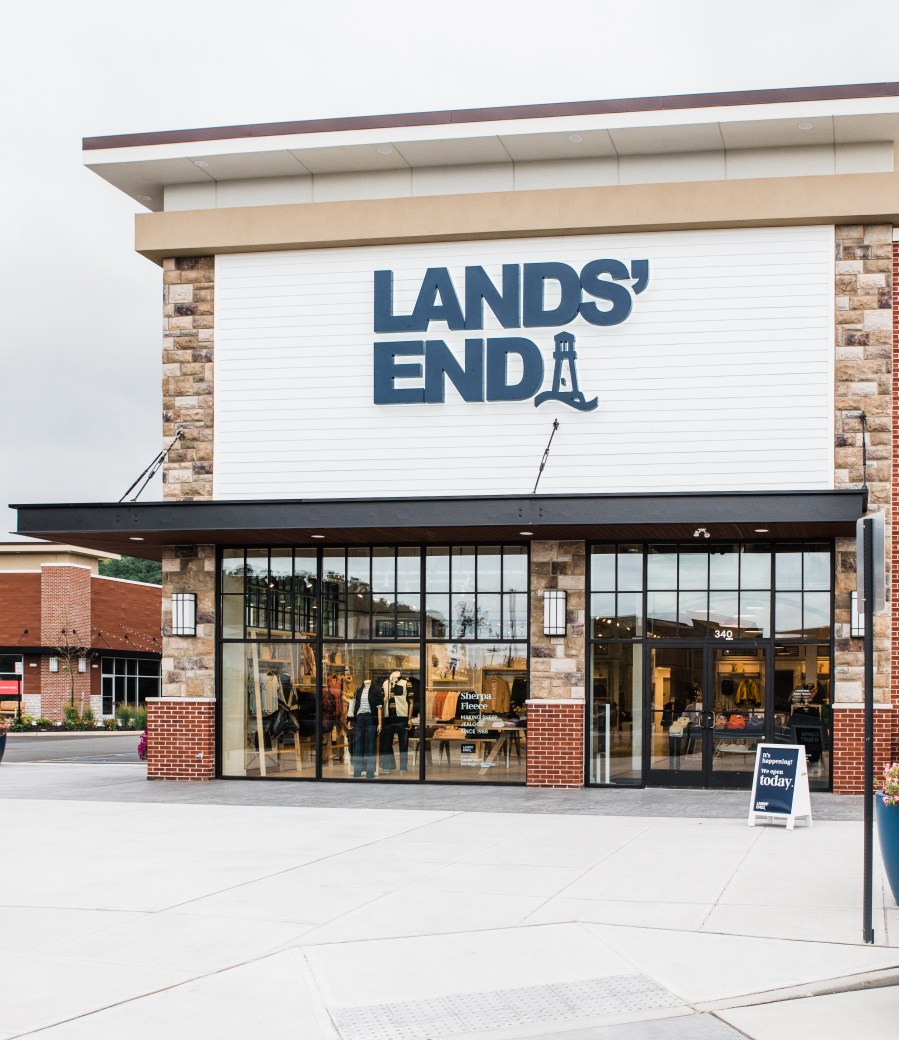The CEO of Lands’ End knows exactly who his customers are

When was the last time you ordered something from a catalog? For most people, it’s been a while. That’s why companies like Lands’ End, which made its name the catalog business, need to adapt in the digital age.
Lands’ End is a 56-year-old company based in Dodgeville, Wisconsin, that sells casual clothing, luggage and home decor. From 2002 to 2014, it was owned by Sears. Two and a half years ago, when Jerome Griffith took over as CEO, the company was hoping for a turnaround after years of declining sales. Since then, Griffith has invested in building out the company’s e-commerce capabilities and opening Lands’ End stand-alone retail stores. One thing he’s not trying to change? Who the company is selling to.
He talked with “Marketplace” host Kai Ryssdal about why he took the job, how he’s changing it and what he likes about this moment in retail. You can read an edited excerpt of their conversation below and listen to the full interview using the media player above.

Kai Ryssdal: Would you be offended if I said that probably most people listening to this and hearing “Lands’ End” are going to think of that old catalog company from like the ’80s and ’90s?
Jerome Griffith: Some people might. That would be true.
Ryssdal: My guess would be a lot, but let’s go with my premise here — the question really is, how do you take an old catalog-y company, which, you know, you’ve been at Land’s End for a couple a couple years now. How do you take that company and turn it into an e-commerce company, which you kinda have to be in retail today?
Griffith: What’s interesting is the reason I came to the company was I saw it as an e-commerce company, because at the time, 87% of everything they sold was done through a click. But it was not being run like an e-commerce company. It was being run like a catalog company from the ’80s with systems from the ’80s. And we’ve really turned the company into, I would say, a digital innovator. I think a lot of it has to do with, you know, the people that you’re hiring, the money that you’re investing and also how do you treat your customer? Because everything is very customer-centric nowadays.
Ryssdal: OK. So if you’re doing the shift toward being more sensitive to e-commerce and your online customers, why then are you investing in brick-and-mortar stores? You know, I mean Lands’ End wants to have this physical presence as well.
Griffith: Yeah, that’s interesting. You know, during the time when we had ownership by Sears, we had a several-hundred-million-dollar business from brick-and-mortar, and as Sears closed and change strategies, that’s basically gone away. Additionally, customers that shop digitally native companies have said, “You know, we would like a place to interact with the brand, not just online.” And I think we have a leg up on our competition in some ways because we know where our customer lives and we know what they buy.
Ryssdal: Those consumers, who are they? Are you getting the millennials that every company now seems to believe that it needs? Is it mostly grandmas and grandpas? Who you’re selling to?
Griffith: You know, our average consumer is in their early 50s. They’re relatively affluent. They live in the suburbs. They use their smartphone. They value comfort. They are more digitally savvy than what you would actually expect. And what we’ve seen over the course of the last couple of years is our average consumers’ age is creeping down, meaning getting a little bit younger, but it’s not a radical shift. I think one of the things that people get confused about is, you know, when do you need to change a company? People go in and make radical shifts. You [should] only do that if a company is really failing.
Ryssdal: A word here about Amazon, if we could. You have made the decision that you’re actually going to be on Amazon and sell there, and I want to know why. Are you not worried about Amazon, or are you just going where your customers are going to be?
Griffith: More than 50% of all searches on clothing are on Amazon. So if you’re not on Amazon, you’re not relevant.
Ryssdal: Full stop?
Griffith: Full stop.
Ryssdal: Do you fear the Amazon juggernaut at all, or are you just in bed with a giant and you’re making the best of it?
Griffith: Somewhere in between the two, I think. You know, Amazon’s been a good partner for us. What they’ve brought to the party is a lot of new customers. You know, our average consumers is mostly female, well over 70%, but on Amazon we find two things: They’re a little bit younger and they’re a little bit more male. And what we also find is that over half of our sales on Amazon are through customers that have never dealt with the brand Lands’ End before and another 27% of our customers that did shop at Land’s End once but haven’t shopped there in over a year, up to five years. So there’s very little existing customer crossover. And as long as that stays true and as long as we’re still selling our bestsellers on Amazon, same as we do on our own website, we’ll we’ll stick with them. They’ve been a good partner so far.
Ryssdal: You’ve been doing this 40 plus or minus years, right? In retail and apparel.
Griffith: Sad but true.
Ryssdal: You were at Tumi, the luggage company, before this. You were set to retire. Why did you take this job?
Griffith: Few reasons. One, it was an e-commerce company, and I saw the challenge because they didn’t run it like it was. Second was because the brand was not tarnished from its years at Sears, which ended up being a relationship which wasn’t the best for the brand. But the consumers still looked at Land’s End as a nice, safe, understandable heritage brand. Plus, I didn’t really feel like sitting around the house being retired.













